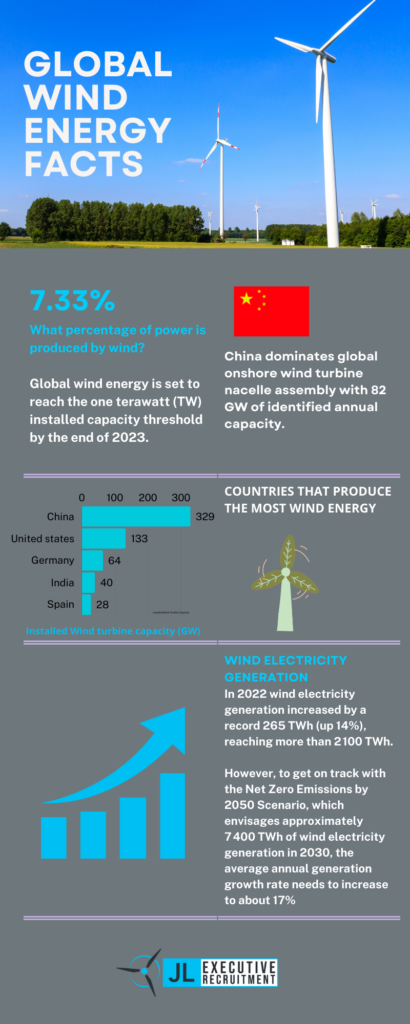
The global wind energy market is expected to cross the installed capacity threshold of 1 terawatt (1TW) by the end of 2023, according to Wood Mackenzie’s latest market forecast.
In 2023, the wind power market in China is expected to rebound strongly, with developers increasing the annual capacity by almost double compared to the previous year. This growth is fuelled by a record year for new wind turbine orders in the country.
Over the next 10 years, China is projected to add an average of 80GW of capacity annually, accounting for 50% of global capacity additions.
Excluding China, the rest of the world added 44GW of capacity in 2022, which is a 4% decrease compared to the previous year.
Challenges such as inflation and disruptions in the supply chain caused more than 3GW of projects to be delayed into 2023 and beyond. However, this delay has provided a boost to the near-term outlook.
Offshore wind market
The offshore wind sector will see increased focus and growth in the next decade as technology innovation and supply chain development make offshore development more accessible in different regions.
Developers will add offshore capacity in 30 countries over the next decade, with European countries and China accounting for 81% of global offshore capacity additions.
The global offshore wind sector is expected to experience sevenfold growth by 2032 and will contribute to 26% of the total capacity over the next 10 years.
In Europe, over 343GW of offshore and onshore capacity will be added in the next decade as countries strengthen their capacity targets in response to the energy crisis. Offshore wind will account for 39% of new capacity, while onshore growth in emerging markets and the repowering of aging fleets in more mature markets will also contribute.
Key wind energy market players
Major players in the wind energy market included companies like Vestas, Siemens Gamesa, GE Renewable Energy, and Nordex, among others. These companies were continually innovating to improve the efficiency and cost-effectiveness of wind turbines.
Onshore wind farms
Onshore wind farms continued to be a significant contributor to the global wind energy capacity. Many countries were investing in expanding their onshore wind infrastructure, often as a part of their renewable energy and carbon reduction strategies.
Wind turbine technological advancements
Technological advancements, such as larger and more efficient wind turbines, better energy storage solutions, and improved grid integration, were enhancing the overall performance and reliability of wind energy systems.
Wind energy policy and government support
Government policies and incentives played a crucial role in the growth of the wind energy market. Many countries offered subsidies, tax incentives, and favourable regulatory frameworks to encourage the development of wind energy projects.
Wind energy market challenges
Despite its growth, the wind energy sector faced challenges, including intermittency (wind is not always blowing), grid integration issues, and concerns about the impact on local ecosystems and landscapes
Wind energy market expansion
The wind energy market was expanding beyond traditional strongholds in Europe and North America. Emerging markets in Asia, Latin America, and Africa were also becoming increasingly important players in the global wind energy industry.
If you want to power up your career in renewable energy, talk to our experts Contact







